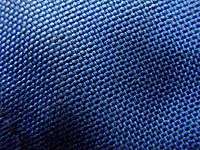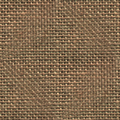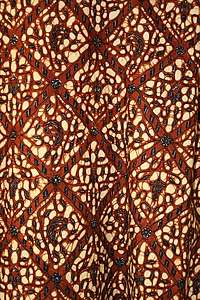Cordura
Cordura is a collection of fabric technologies used in a wide array of products including luggage, backpacks, trousers, military wear and performance apparel. Cordura fabrics are durable and resistant to abrasions, tears and scuffs.[1]


Originally developed and registered as a trademark by E.I. du Pont de Nemours and Company (DuPont) in 1929, it is now the property of Invista, a wholly owned subsidiary of Koch Industries.[2] Cordura fabrics are usually made of nylon, but may be blended with cotton or other natural fibers.
Overview
DuPont originally introduced the fabric as a type of rayon.[3][4] The product was further developed during World War II and used by the military in tires. In 1966, when new formulations of nylon proved superior, the Cordura brand name was transferred to the nylon product instead. In 1977 researchers discovered a process for dyeing Cordura, which opened a wide variety of commercial applications. By 1979 soft-sided Cordura luggage had captured about 40 percent of the luggage market. Several classic brands that remain popular today continue to use Cordura fabric in their products. Eastpak was the first brand to use Cordura fabric in their packs,[5] while JanSport used the canvas-like nylon in their original daypacks in the 1970s and uses polyester cordura today. No Jansport bags are made with nylon today.[6] In the 1980s Manhattan Portage began using 1000D Cordura Nylon in their bags.[7] In the 1990s, European workwear clothing brands adopted the 1000D and 500D fabric for reinforcements. Clothing brands such as F. Engel, Fristads Kansas, Snickers and Scruffs use the fabric. Cordura is also used today in most mid- to high-quality textile motorcycle jackets and pants for its high abrasion resistance. It is found in motorcycle gear made by companies such as Klim, Rukka, MotoPort, Rev'It, Olympia, AeroStich, and Dainese.[8]
Cordura fabrics are available in a wide range of constructions, weights and aesthetics, including versions designed especially for tear resistance and color retention. There are also baselayer, denim and canvas fabrics that contain blends of Invista 420 nylon 6,6 fiber and cotton, known as Cordura Baselayer, Cordura Denim, and Cordura Duck respectively.[9]
Some Cordura fabrics have been designed specifically for military[10] and extended outdoor use.[11] Cordura fabrics have a longstanding military heritage (over 45 years), and many US military fabric specs are based on Cordura brand specifications.
Invista continues to develop new fabrics under the Cordura brand.
References
- "CORDURA® Brand - Home". www.cordura.com.
- "Koch Subsidiaries Buy Fibers Unit from DuPont". Invista.com. 2004-04-30. Archived from the original on 2011-05-24. Retrieved 2011-10-18.
- "Cordura". dupont.com. 2009-02-02. Archived from the original on 2011-07-31. Retrieved 2011-10-18.
- "A Short History of Manufactured Fibers". Fibersource.com. 1969-07-20. Archived from the original on 2008-05-11. Retrieved 2011-10-18.
- RETROFUZZ. "Collection 2011 | Quinze & Milan x Eastpak | Built to Resi(s)t". Eastpak.com. Archived from the original on 2011-09-29. Retrieved 2011-10-18.
- "EcoTextiles Just Got Tougher: Cordura EcoMade". TreeHugger. Retrieved 2011-10-18.
- "Manhattan Portage Bags - Company Information". Manhattanportage.com. 2011-08-17. Archived from the original on 2017-06-09. Retrieved 2011-10-18.
- "Save Your Hide Article". Motoport.com. Archived from the original on 2009-02-21. Retrieved 2011-10-18.
- "Invista Unveils Cordura Denim Fabric". Textile World. Retrieved 2011-10-18.
- Rayfield, Susannah. "The First Line of Defence: The Infantry Soldier" (PDF). Cordura Fabric. Sovereign Publications. Archived from the original (PDF) on 2017-07-03. Retrieved 2019-02-06.
- "Outdoor Research Ferrosi Hoody". Outdoorinformer.com. Archived from the original on 2010-06-27. Retrieved 2011-10-18.


.svg.png)